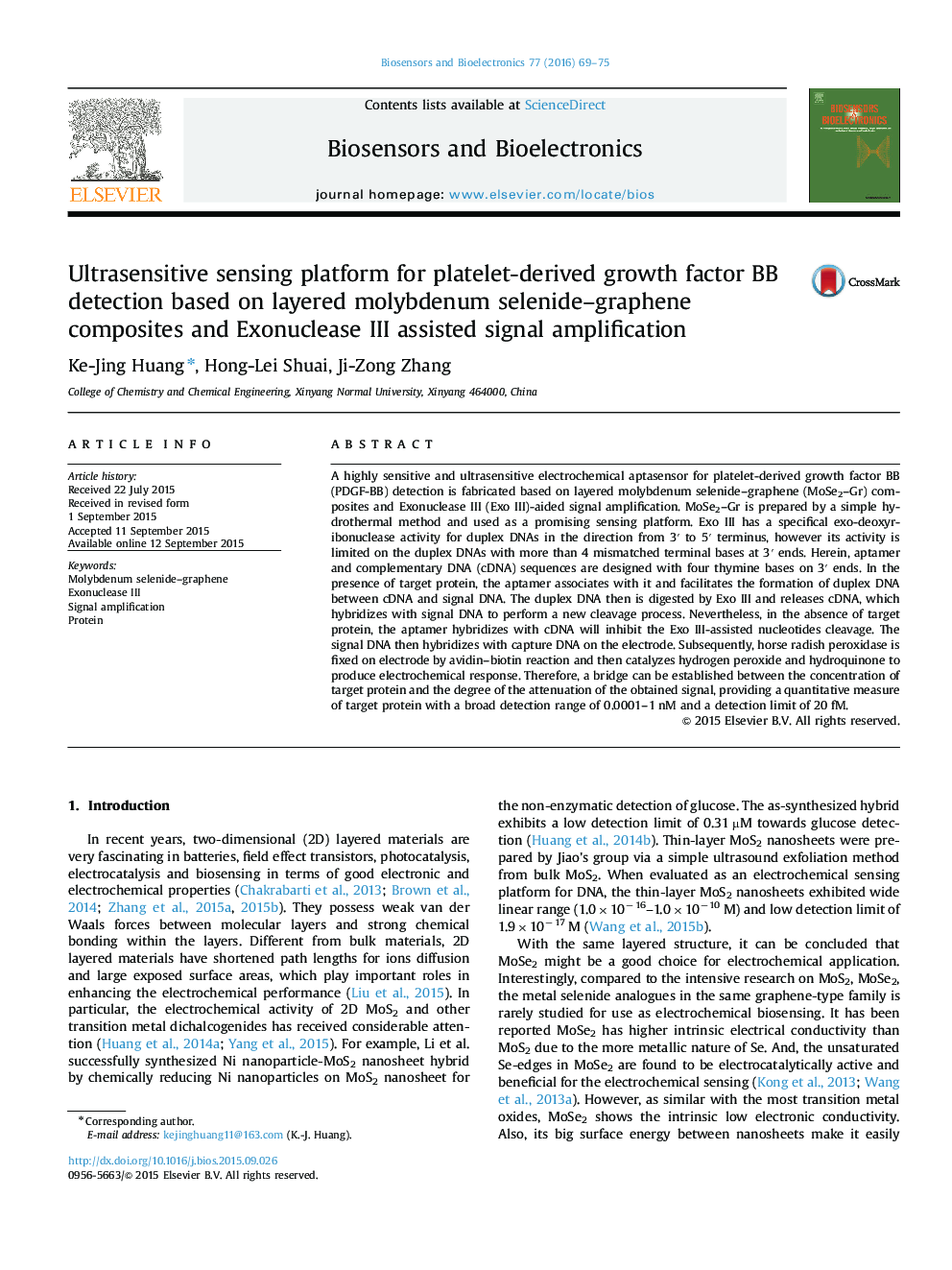| Article ID | Journal | Published Year | Pages | File Type |
|---|---|---|---|---|
| 7231256 | Biosensors and Bioelectronics | 2016 | 7 Pages |
Abstract
A highly sensitive and ultrasensitive electrochemical aptasensor for platelet-derived growth factor BB (PDGF-BB) detection is fabricated based on layered molybdenum selenide-graphene (MoSe2-Gr) composites and Exonuclease III (Exo III)-aided signal amplification. MoSe2-Gr is prepared by a simple hydrothermal method and used as a promising sensing platform. Exo III has a specifical exo-deoxyribonuclease activity for duplex DNAs in the direction from 3â² to 5â² terminus, however its activity is limited on the duplex DNAs with more than 4 mismatched terminal bases at 3â² ends. Herein, aptamer and complementary DNA (cDNA) sequences are designed with four thymine bases on 3â² ends. In the presence of target protein, the aptamer associates with it and facilitates the formation of duplex DNA between cDNA and signal DNA. The duplex DNA then is digested by Exo III and releases cDNA, which hybridizes with signal DNA to perform a new cleavage process. Nevertheless, in the absence of target protein, the aptamer hybridizes with cDNA will inhibit the Exo III-assisted nucleotides cleavage. The signal DNA then hybridizes with capture DNA on the electrode. Subsequently, horse radish peroxidase is fixed on electrode by avidin-biotin reaction and then catalyzes hydrogen peroxide and hydroquinone to produce electrochemical response. Therefore, a bridge can be established between the concentration of target protein and the degree of the attenuation of the obtained signal, providing a quantitative measure of target protein with a broad detection range of 0.0001-1Â nM and a detection limit of 20Â fM.
Related Topics
Physical Sciences and Engineering
Chemistry
Analytical Chemistry
Authors
Ke-Jing Huang, Hong-Lei Shuai, Ji-Zong Zhang,
